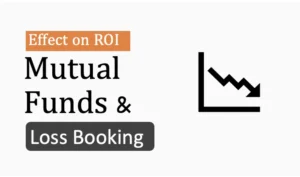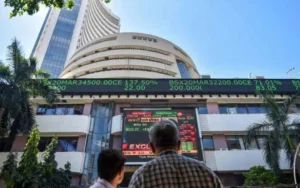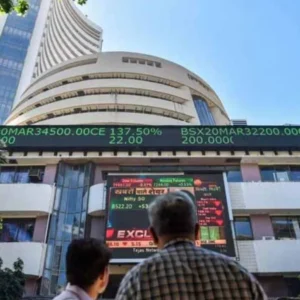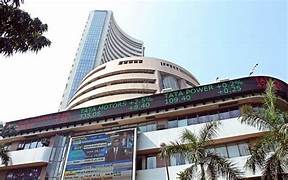When looking for quick financing options, personal loans often come into our minds due to its unsecured nature, no end use restriction and quicker disbursals. While these loans are easy to avail, their applicants need to factor in their EMI affordability and the optimum loan tenure before making the loan application. The best way to find your optimum loan tenure or EMI is to use a personal loan EMI calculator. Following are a few more points elaborating on the benefits of using a personal loan EMI calculator before applying for a personal loan.
1. Quick and Accurate Calculation of EMIs
The mathematical formula for calculating EMI on a personal loan is [P x R x (1+R)^N]/[(1+R)^N-1], where ‘P’ is the Principal Amount; ‘R’ is the Rate of Interest and ‘N’ is the Tenure (in months). Prospective personal loan applicants can use this formula to estimate EMIs on their personal loans manually. However, such manual calculations can be complex and time-consuming. Prospective personal loan applicants could be at it for hours if it were to be done repeatedly for different sets of values. Also, with manual calculations there is always a chance of making errors, thereby, making it even more important to use a personal loan EMI calculator. Using a personal loan calculator for EMI calculation will not only help prospective personal loan applicants avoid complex mathematical calculations but also generate accurate results in just a second.
2. Estimated cost of borrowing
Most personal loan EMI calculators not only calculate the EMI amount but also the total interest payable and the total loan amount payable, i.e. the sum of principal amount and interest payable. This helps borrowers to estimate the total interest cost of the loan. However, when considering the cost of borrowing, borrowers should remember to factor in the processing fee, which also contributes to their overall cost of the loan. If the borrower is planning to prepay/foreclose the loan, then prepayment/foreclosure charges should also be considered when evaluating the total cost of borrowing. However, the borrower in such cases should use APR calculator to find the overall cost of borrowing after factoring in processing fee, documentation charges or other related fees and charges.
3. Determine Optimum Tenure
Determining the optimum loan tenure (or repayment period) for a personal loan depends on your financial goals, budget, and individual circumstances. There’s no one-size-fits-all answer, as the right tenure varies from person to person. Here are some factors to consider when determining the optimum tenure for your personal loan:
- Monthly Budget and Cash Flow: Assess your monthly income and expenses to determine how much you can comfortably allocate toward loan repayments. A shorter tenure results in higher monthly EMIs, while a longer tenure leads to lower EMIs. Choose a tenure that aligns with your budget.
- Interest Rate: Consider the interest rate on your loan. A shorter tenure may have a lower overall interest cost because you pay interest for a shorter period. However, it will also result in higher monthly payments. A longer tenure may have a higher overall interest cost but lower monthly payments.
- Loan Purpose: The purpose of the loan can influence the tenure. For essential needs with a specific timeframe, such as education expenses, choose a tenure that matches the goal’s duration. For general-purpose loans, you can align the tenure with your budget.
- Loan Amount: A larger loan amount may require a longer tenure to maintain manageable EMIs. However, a shorter tenure can be chosen for smaller loan amounts.
- Financial Goals: Consider your short- and long-term financial goals. A shorter tenure allows you to pay off the loan faster, reducing financial stress. A longer tenure may free up cash for other investments or goals, but it may lead to higher interest costs.
- Prepayment Flexibility: Check if the lender allows prepayment without penalties. If prepayment is possible, you can choose a longer tenure for lower EMIs and then make additional payments when you have surplus funds.
- Age and Retirement Plans: Consider your age and retirement plans. A longer loan tenure may extend into your retirement years, impacting your post-retirement financial stability.
- Job Stability: Assess your job stability and income prospects. If you anticipate a higher income in the future, you may opt for a shorter tenure.
- Total Interest Cost: Use an EMI calculator to compare the total interest cost for different tenures. This can help you make an informed decision.
- Risk Tolerance: Evaluate your risk tolerance. A shorter tenure may have higher EMIs but lower total interest costs, while a longer tenure spreads the cost over a more extended period.
Remember that there are trade-offs between loan tenure and monthly payments. Shorter tenures mean higher monthly payments but lower overall interest costs. Longer tenures result in lower monthly payments but higher overall interest costs.
Ultimately, the optimum loan tenure is one that allows you to comfortably manage loan payments while achieving your financial goals. It’s advisable to discuss your options with a financial advisor or loan officer who can provide personalized guidance based on your specific situation.
Tenure is one of the major factors that influences personal loan EMI amount and the total interest cost. Longer tenure results in lower EMI, which increases borrowers’ EMI affordability and also allows them to accommodate more of their planned and unplanned expenses besides their monthly contributions towards their crucial financial goals. Shorter loan tenure, on the other hand, increases the EMI payments, allowing borrowers to close their personal loans faster. While longer tenure increases the overall interest payout, a shorter tenure reduces it. For determining the optimum tenure for your personal loan, borrowers can calculate personal loan EMI for different sets of values using the EMI calculator and then, take a decision accordingly.
4. EMI Affordability
Determining the affordability of an Equated Monthly Installment (EMI) is a crucial step before taking on any loan, as it ensures that you can comfortably manage your loan payments without straining your finances. Here are steps to assess EMI affordability:
- Evaluate Your Monthly Budget:
- Begin by reviewing your monthly income and expenses. Calculate your net disposable income, which is the amount left after deducting all essential expenses like rent/mortgage, groceries, utilities, insurance, and transportation.
- Understand Your Debt Obligations:
- Take stock of your existing debt obligations, such as credit card payments, existing loans, and any other financial commitments. Consider how much of your income is already allocated to servicing debt.
- Determine a Comfortable EMI Percentage:
- A general rule of thumb is to limit your total monthly debt obligations, including the new EMI, to around 30-40% of your net income. This ensures that you have enough room in your budget for other essential expenses and savings.
- Use an EMI Calculator:
- Utilize an online EMI calculator provided by banks or financial websites. Input the loan amount, interest rate, and various loan tenure options to estimate the EMIs for different durations.
- Consider Future Expenses:
- Think about any upcoming major expenses or changes in your financial situation. This could include planned vacations, education expenses, or potential changes in income.
- Emergency Fund and Savings:
- Ensure that you can maintain or build an emergency fund and continue saving for future goals even after taking on the loan.
- Account for Fluctuating Interest Rates:
- If you are considering a variable interest rate loan, factor in potential interest rate fluctuations. Ensure that you can afford higher EMIs if interest rates rise.
- Plan for Prepayments:
- Determine whether you can make occasional prepayments to reduce the loan balance and shorten the loan tenure. This can save on interest costs.
- Seek Professional Advice:
- Consult with a financial advisor or loan officer who can provide personalized guidance based on your financial situation and goals.
- Choose the Right Tenure:
- Select a loan tenure that aligns with your budget and financial goals. Remember that shorter tenures have higher EMIs but lower overall interest costs, while longer tenures have lower EMIs but higher overall interest costs.
- Avoid Overcommitting:
- Be cautious not to overcommit to a high EMI that leaves you with insufficient funds for daily living expenses or other financial goals.
- Consider Loan Protection Insurance:
- Loan protection insurance can provide coverage in case of unforeseen events like job loss or disability. It can provide peace of mind when taking on a significant loan.
It’s essential to strike a balance between borrowing what you need and ensuring that you can comfortably manage the EMI payments. Avoid stretching your finances to the limit, as unexpected expenses or changes in your financial situation can affect your ability to meet your loan obligations. Always make an informed decision by considering your current financial position and future financial goals.
Lenders prefer approving personal loan applications of those having total EMI obligations, including EMI of the proposed personal loan, are within 50-60% of their net monthly income. Using Personal Loan EMI Calculator will give the prospective borrowers an estimate of their EMIs. This will allow applicants exceeding the aforementioned limit to take steps to reduce their EMIs and increase their chances of personal loan approval. One of the ways to reduce your personal loan EMI is to opt for longer loan tenure. Choosing longer tenure will reduce the monthly payouts and thereby, contain borrower’s total EMI obligations within 50-60% of their net monthly income.
5. Financial Planning
The EMIs for fixed rate personal loans remain the same throughout the loan tenure, which helps prospective borrowers in planning for their finances with higher certainty. The EMIs of floating rate personal loans, on the other hand, may change during the loan tenure due to change in the linked external benchmark rates. However, in such cases too, prospective borrowers can use a personal loan EMI calculator to get a rough idea on their loan EMIs and keep a provision in their monthly budget to accommodate the increase in the personal loan interest rates, if need be.
When planning for their loan repayment, prospective borrowers must avoid compromising their monthly contributions towards emergency funds and crucial financial goals. As doing so may force you to liquidate your investments and/or avail a new loan at higher interest rates to deal with financial exigencies, if any, or to meet the unavoidable financial goals.
Note that your emergency fund should cover your unavoidable expenses including your utility bills, rent, existing loan EMIs, SIPs, insurance premiums, etc. for at least 6 months. Thus, prospective borrowers should also factor in their estimated personal EMIs towards their emergency funds. This would save them from the risk of loan defaults during financial emergencies or periods of loss of income arising from job loss, illness, disability, etc. Delays or defaults in your personal loan repayment would not only attract penal interest and other related charges, but can also adversely affect your credit score, which would further impact future loan or credit card eligibility.
[contact-form][contact-field label=”Name” type=”name” required=”true” /][contact-field label=”Email” type=”email” required=”true” /][contact-field label=”Website” type=”url” /][contact-field label=”Message” type=”textarea” /][/contact-form]

































